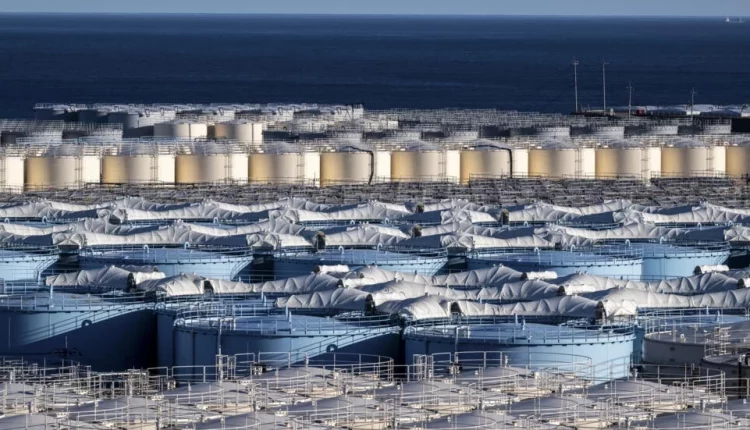Controversial plan to release Fukushima plant’s wastewater
Twelve years after a nuclear catastrophe triggered by a massive earthquake and tsunami, workers at the Fukushima Daiichi plant in northeast Japan are preparing to release treated wastewater into the sea.
TEPCO, the operator, claims that the water has been filtered to remove the majority of the radioactive elements and that the release is both safe and necessary; however, there has been opposition both domestically and internationally.
Why is it necessary to let the water out?
Each day, the location produces contaminated water equivalent to 100,000 liters (3,500 cubic feet). It is made up of water that is used for cooling, groundwater, and rainwater that seeps into the area.
As of February, the site was storing more than 1.32 million tonnes of treated water, which is filtered to remove the majority of radionuclides.
TEPCO is eager to begin releasing the water as soon as possible because that represents 96% of the storage capacity.
The procedure is anticipated to begin this spring or summer in accordance with a plan approved by the central government.
Is it risky?
According to TEPCO, the majority of the water’s 62 radioactive elements, including caesium and strontium, are removed by a number of filtering systems, including the ALPS facility. However, tritium remains.
TEPCO plans to dilute the water to reduce radioactivity levels to 1,500 becquerels per litre, well below the national safety standard of 60,000 becquerels per litre, according to experts.
The release “will not cause any harm to the environment,” according to the International Atomic Energy Agency (IAEA).
The release is strongly opposed by neighboring nations like China and South Korea, activist groups like Greenpeace, and some local residents.
The release is feared by local fishermen to once more cause consumers to be wary of purchasing their catch.
Masahiro Ishibashi, a 43-year-old fisherman, told AFP, “We have suffered reputational damage since the disaster, and we will go through that all over again, starting from zero.”
How will the water flow out?
In order to release treated water over several decades, the operator is constructing additional shore-based filtering facilities and an underwater pipe that is 0.6 miles long.
According to TEPCO official Kenichi Takahara, “We don’t plan to release the water all at once; it will be a maximum of 500 tonnes a day out of the total of 1.37 million tonnes of ALPS-treated water.”
“It will take 30 to 40 years, which is the amount of time necessary to decommission the plant.”
The operator will set a limit on the amount of radioactivity that will be released from tritium at 22 trillion becquerels per year, which was the national annual standard for wastewater releases before the accident.
What has been the response?
TEPCO is meeting with local residents in an effort to garner support, and Japanese diplomats have been briefing countries nearby on the plan.
Fish are being kept in the treated water as part of their most recent project.
Fish kept in ALPS-treated water do, to some extent, consume tritium. However, Kazuo Yamanaka, in charge of the trials, stated, “The level of tritium in the fish rapidly decreases once the animal is transferred to normal seawater.”
He keeps hundreds of flatfish and other sea creatures in a number of tanks at the plant. Half of the tanks contain regular seawater, and the other half contain treated wastewater that has been diluted to about the same level as the liquid that will be released.
He plans to expand the trials to seaweed and broadcasts the fish live on YouTube.
He stated, “When we talked to local residents, they said they wanted to see fish living in the ALPS-treated water in a healthy way.”
“They said they would feel more reassured when they saw it, rather than just seeing data and numbers,” reads one of the responses.
TEPCO’s efforts may not be able to win over fishing communities that are still trying to get back on their feet after the disaster.
Ishibashi stated, “I don’t think the fisheries of Fukushima will truly recover until the day the nuclear plant closes.”


